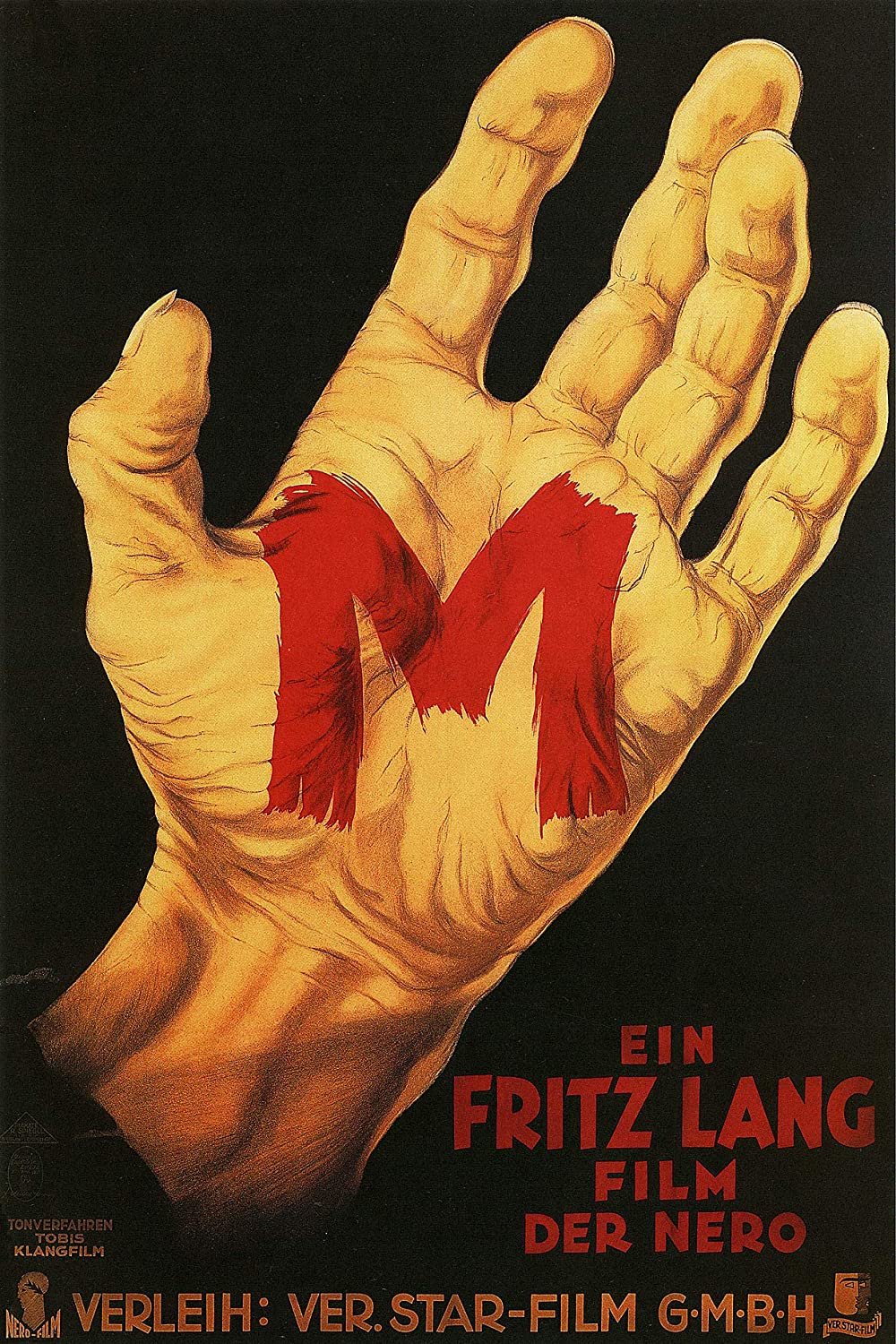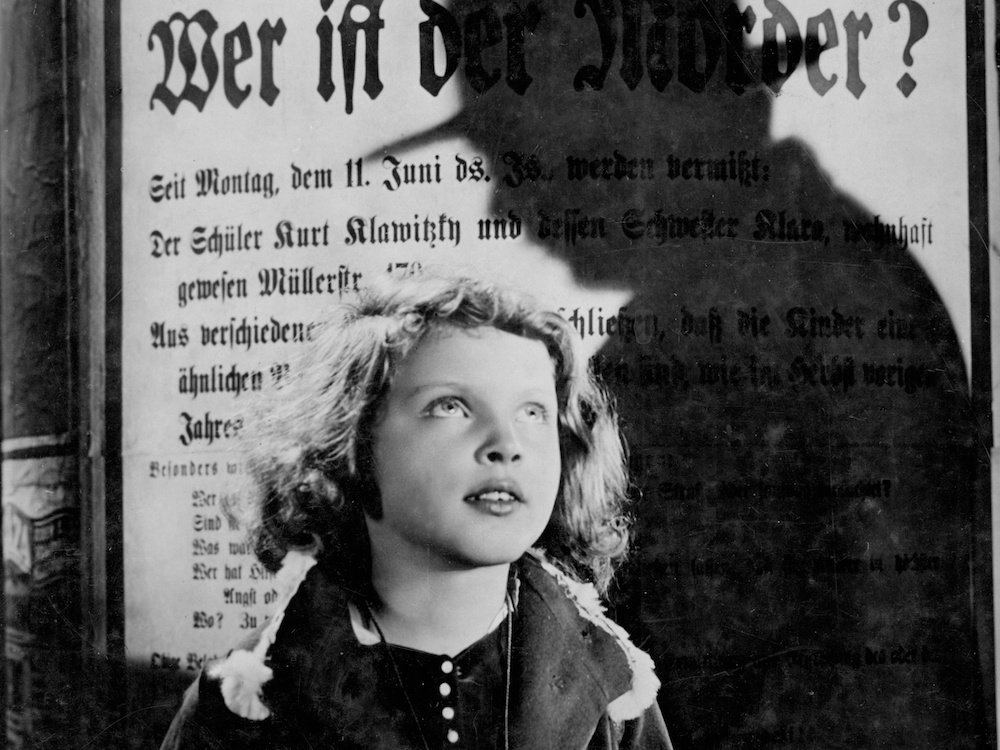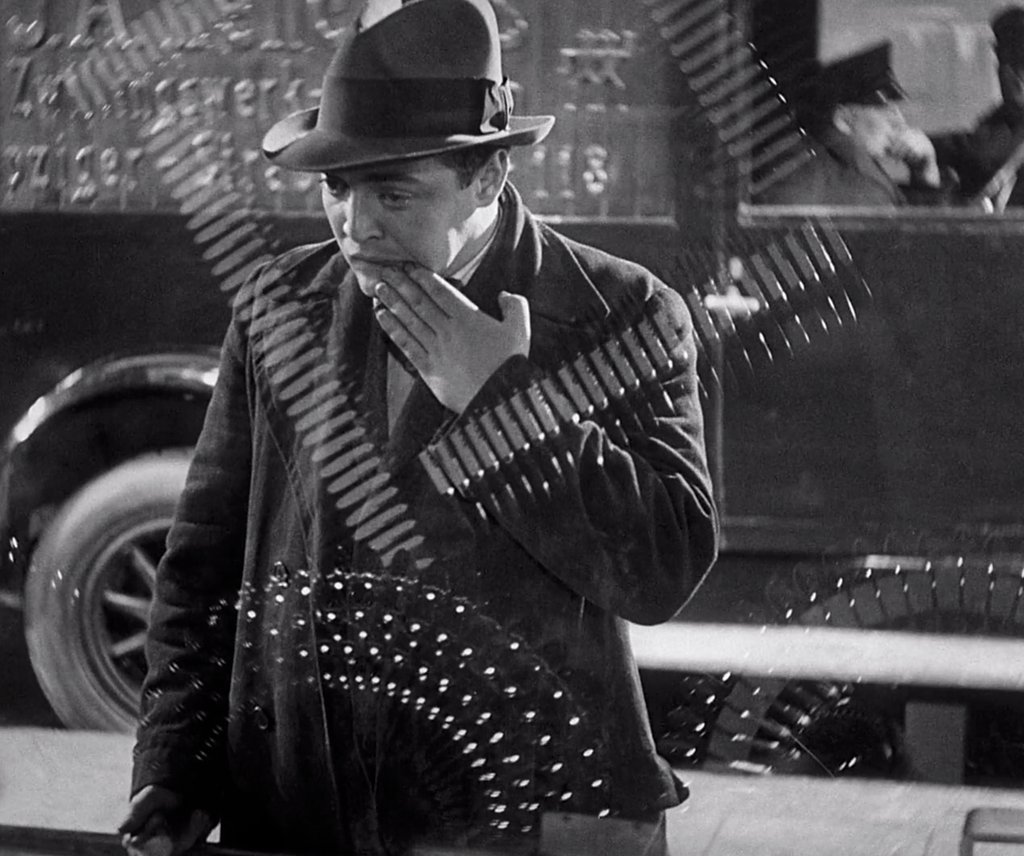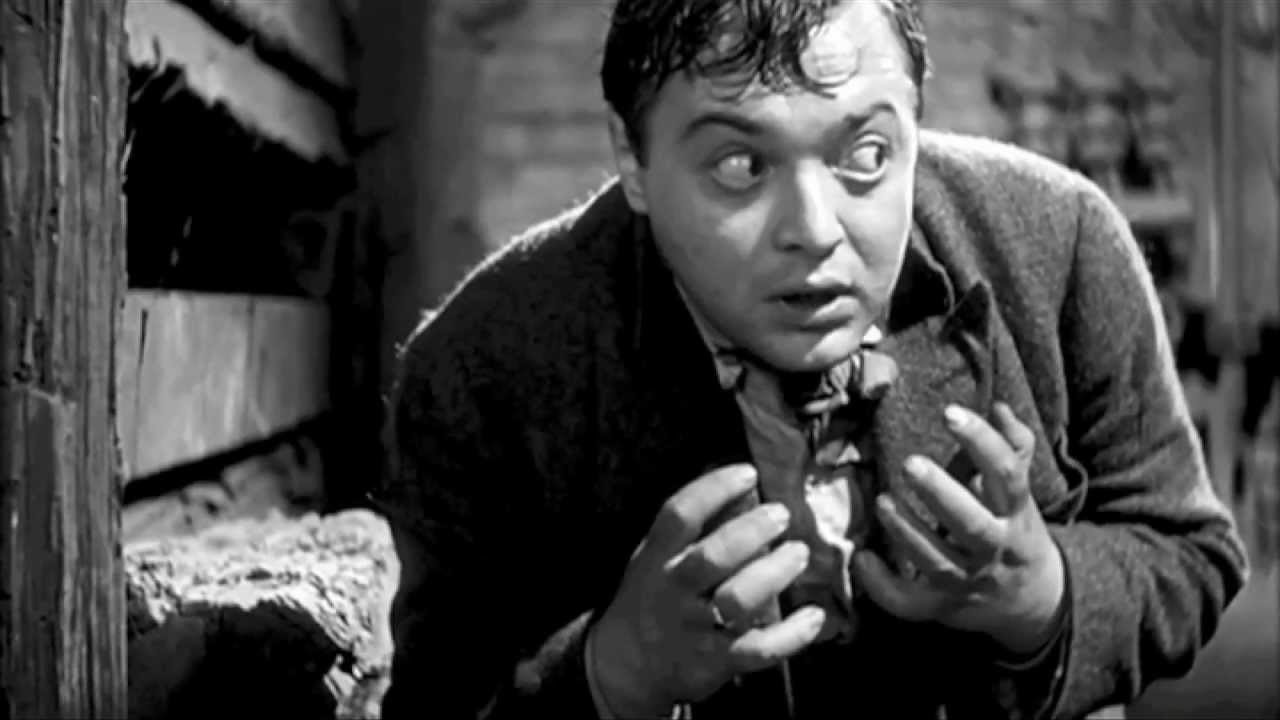"M" for Masterpiece by SMC Founder.Programmer Craig Hammill
This piece isn’t to argue that Fritz Lang’s and Thea Von Harbou’s and Peter Lorre’s M (1931, dir by Fritz Lang, Germany) is an underrated masterpiece.
Most everyone has to see it in film school. And it ranks 56th and 75th respectively in the critics’ and directors’ 2012 Sight and Sound Poll of the top 100 movies of all time.
But this piece is here to argue that even that feels off. M may be one of the top 10 greatest movies of all time. At least in this programmer’s opinion.
And ultimately, this piece is really just a two arm grabbing, slightly jostling plea for you to watch it again. As soon as possible. It may just blow your mind.
M tells the seemingly untellable story of a child murderer (played stunningly by Peter Lorre) who has terrorized a German city for months. Finally both the Police and the Criminal Underworld decide they have to catch the killer by any means necessary. But it’s the Criminals who do so, brilliantly, by mobilizing an army of ignored street beggars, and finally bringing the killer to stand trial in a kangaroo court in an abandoned factory.
Fritz Lang directed this early sound masterpiece from a script by his then-wife Thea Von Harbou (who also wrote Metropolis and would stay in Germany under Hitler while Lang would flee to the United States) .
Like so much great cinema, the movie speaks for itself. A piece like this is, at best, like a story someone tells you about an amazing trip they took. It gets you excited to go there. But ultimately you have to go to see for yourself.
Still, let’s take this trip into the dark nocturnal corners and recesses of the human psyche.
M is a kind of singular miracle on a number of key levels. Ultimately, it’s one of the few movies that somehow makes an exploration of systems (the police, criminals, cities, citizens, mob hysteria, parents, children) wild and fascinating. It also uses sound and editing and that classic rich German expressionist lighting and production design to enhance and amplify the story. Something that very few filmmakers have ever truly been able to do.
AND it has an incredible script via Harbou and one of the great film performances from Lorre.
This programmer recently re-watched M (which is on a short list with movies like Seven Samurai, Sunrise, The Last Laugh, Stagecoach for yearly re-watches).
The very first choice of the movie is brilliant. We see a titlecard of a gnarled hand with M written in chalk on it. Then we cut (the second choice is equally as brilliant) to a crane shot of children playing a kind of “duck duck goose” game where kids get called out with a song about the killer coming to kill them.
The camera then booms up to a tired mother gathering laundry and admonishing the kids to stop singing that horrible song. We then meet a mother in the same building waiting for her daughter to come home from school.
We then meet the daughter, little Elsie Beckmann. And then, via a shadowy introduction on a wanted poster, we meet the child murderer himself, Peter Lorre. Who is so baby faced and kind, we understand how he’s flown under the radar.
In under 10 minutes, the filmmakers have introduced all the key themes, tensions, and the key player (the Murderer) that will drive the entire story.
Another stunning aspect of M that frankly feels embarrassing for the current state of cinema is how brilliantly and focused Lang is with his use of the new technology of sound. There is constant contrast between shots of silence and shots of sound. Lang uses dialogue to carry over cuts from LOCATION A to LOCATION B.
Lang match cuts a Police Chief waving his arm to an Underworld Boss waving his arm.
All these cinematic choices create third and even fourth ideas, associations in our mind: one of the pinnacle achievements of cinema. For example, the linking of the Police and the Criminals not only creates an ironic contrast but actually shows they have a common cause: to find and stop the killer.
But a cinematic bag of tricks can only take you so far. Ultimately the story and the profundity of the ideas have to take you to that final rarefied level.
And again here, M does that stunningly.
The kangaroo court scene at the end of the movie where all the criminals of the city-thieves, murderers, pick pockets, prostitutes, black marketeers-gather to pass judgement on the Child Murderer is already so rife with irony from its first moment that it’s hard to believe it only gets richer and richer and stranger and stranger.
The Criminals actually afford the Murderer a defense attorney and allow the Murderer to speak. When Lorre finally does admit to his murders and tries to explain the horrific compulsion that drives him to do so, we are stunned because we come to understand him. Not sympathize but understand how evil works. The filmmakers, somehow, make us understand the horrific compulsion that underlies much of the darkest unspeakable evil.
And then…
Much like Seven Samurai, M seems determined to be BOTH profound and wildly cinematically entertaining. Maybe because such a goal requires so much work, effort, patience, experimentation, craft, adjustments, it is achieved so rarely in cinema (as great and vast as the works of cinema are).
But when a movie does fire on all cylinders-story, style, idea, performance, craft, pace, entertainment, innovation, experimentation-sister and brother, I’m here to tell you you better run not walk to watch that movie.
If you believe in cinema. And the power of cinema. Take nourishment from M. Then make something of your own.
Craig Hammill is the founder.programmer of Secret Movie Club.





